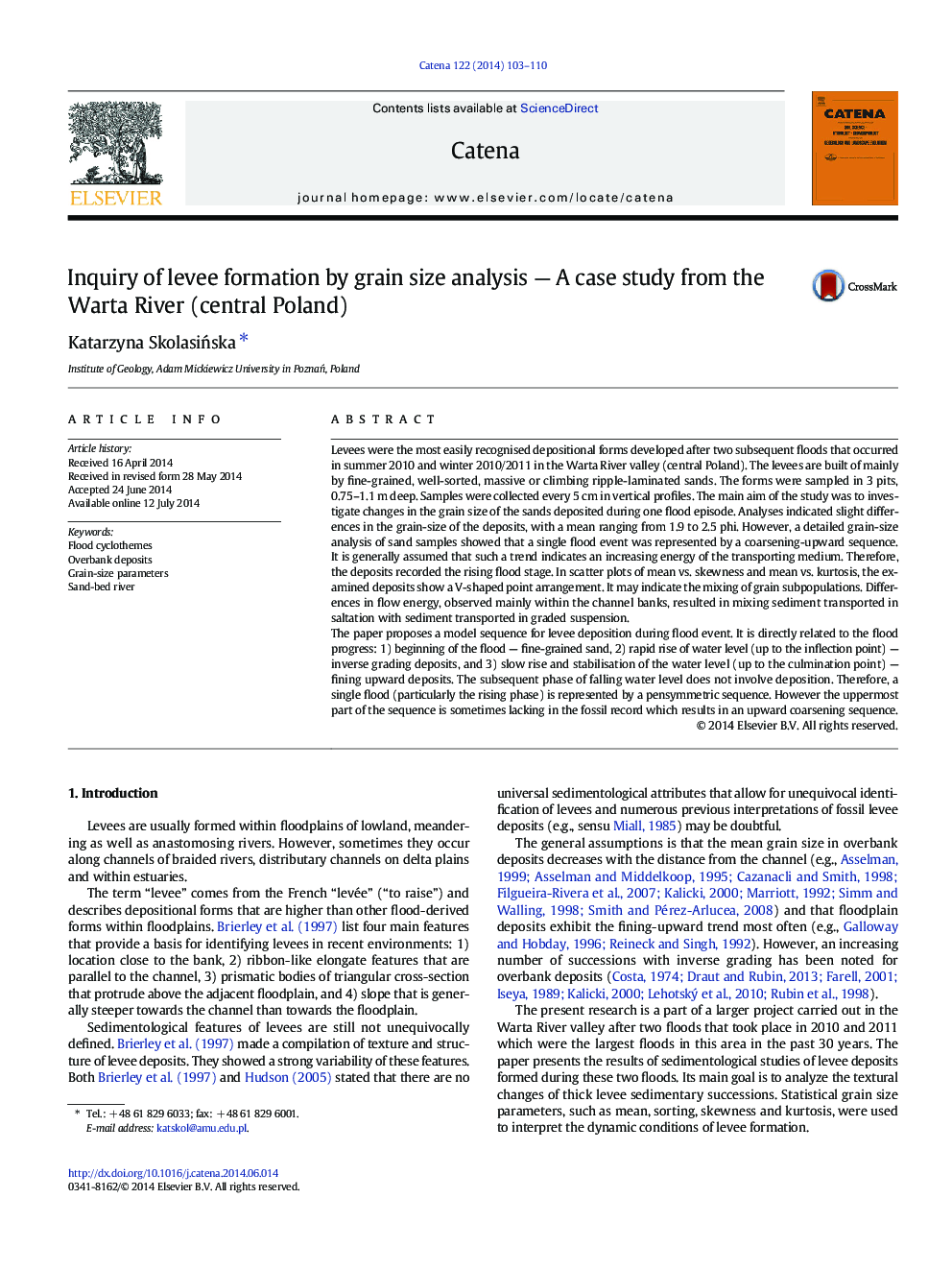| کد مقاله | کد نشریه | سال انتشار | مقاله انگلیسی | نسخه تمام متن |
|---|---|---|---|---|
| 4571402 | 1629230 | 2014 | 8 صفحه PDF | دانلود رایگان |

• Texture and structure of recent levee deposits
• Grain size parameters of levee deposits within vertical succession
• Model of sedimentation within levees of sand-bed meandering rivers
Levees were the most easily recognised depositional forms developed after two subsequent floods that occurred in summer 2010 and winter 2010/2011 in the Warta River valley (central Poland). The levees are built of mainly by fine-grained, well-sorted, massive or climbing ripple-laminated sands. The forms were sampled in 3 pits, 0.75–1.1 m deep. Samples were collected every 5 cm in vertical profiles. The main aim of the study was to investigate changes in the grain size of the sands deposited during one flood episode. Analyses indicated slight differences in the grain-size of the deposits, with a mean ranging from 1.9 to 2.5 phi. However, a detailed grain-size analysis of sand samples showed that a single flood event was represented by a coarsening-upward sequence. It is generally assumed that such a trend indicates an increasing energy of the transporting medium. Therefore, the deposits recorded the rising flood stage. In scatter plots of mean vs. skewness and mean vs. kurtosis, the examined deposits show a V-shaped point arrangement. It may indicate the mixing of grain subpopulations. Differences in flow energy, observed mainly within the channel banks, resulted in mixing sediment transported in saltation with sediment transported in graded suspension.The paper proposes a model sequence for levee deposition during flood event. It is directly related to the flood progress: 1) beginning of the flood — fine-grained sand, 2) rapid rise of water level (up to the inflection point) — inverse grading deposits, and 3) slow rise and stabilisation of the water level (up to the culmination point) — fining upward deposits. The subsequent phase of falling water level does not involve deposition. Therefore, a single flood (particularly the rising phase) is represented by a pensymmetric sequence. However the uppermost part of the sequence is sometimes lacking in the fossil record which results in an upward coarsening sequence.
Journal: CATENA - Volume 122, November 2014, Pages 103–110